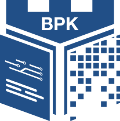Open Science
Open Science is the idea of promoting free and universal access to knowledge, not only through access to research results or scientific publications, but also to the methodology and tools of science, e.g. by participating in scientific projects and using the knowledge of scientists.
Open Science movement seeks free exchange of ideas and information and verification of existing scientific experience. The Internet remains the main channel of communication in Open Science. Using new technologies, this idea contributes to reducing inequalities and eliminating technical, financial and legal barriers, thus providing faster and more universal access to knowledge. It also enables the establishment of new contacts and the creation of networks of connections between scientists and recipients of scientific content.
Open Science is implemented primarily through Open Access for publications and open research data.
The 5R principle of David Wiley tells about the openness of resources:
- Reuse – reuse the resource in any way,
- Revise – adaptation, adjustment and modification of the resource,
- Remix – combining original content or modifying it with other sources in order to create a new quality,
- Redistribute – distributing and sharing copies of the original or modified, remixed content,
- Retain – creating your own resources and sharing them on the network.
Only when the publication/ material meets the above conditions we can speak of an open resource. They are fulfilled by the so-called free licenses.
If you have any questions, please feel free to contact us: open.access@pk.edu.pl
Free licenses
The use of open resources in practice is regulated by free licenses. It is a response to the very restrictive rules of copyright in Poland. Copyright does not allow free use of resources and does not take into account new technologies and mechanisms for publishing materials.
Publishing under free licenses allows the user to:
- reuse of materials developed by others,
- changing, transforming and adapting to one's own purposes and needs (e.g., translation of texts from foreign languages),
- combining with other materials (remixing, e.g. text with sound),
- redistribute and share your work with others.
Free licenses:
- Creative Commons
- GNU GPL (General Public License)
See more on Creative Commons. (new window)
Open Access
OA refers to research outputs which are distributed online and free of charge or other barriers.
It is one of the noblest duties of a university to advance knowledge and to diffuse it not merely among those who can attend the daily lectures but far and wide.
[D. Coit Gilman, the first president of Johns Hopkins University, 1878]
Open access can be applied to all forms of published research output, including peer-reviewed and non peer-reviewed academic journal articles, conference papers, monographs, book chapters, and theses.
The legal basis of the Open Access model is open (free) licenses and the consent of the copyright holder or releasing the work into the public domain. Thanks to the use of open licenses, the copyright holders can specify in detail the possible forms of using the publication. Authors have the option of publishing texts in Open Access journals or posting articles on their own or institutional website.
The goal of Open Access is to make scientific communication independent of commercial intermediaries, and thus to disseminate and enable access to research results for all scientists. Authors have the option of making their articles available as e-prints in digital archives, which can be in the form of peer-reviewed texts (postprints) or non-peer-reviewed versions before printing (preprints), they also have the option of publishing texts in Open Access journals or posting articles on their own or institutional websites.
Open Access gives authors the chance to create open repositories and journals to disseminate the results of scientific research on a large scale. OA provides access to the results of scientific research and researchers publishing their works gain greater recognition and increase the number of citations. OA gives wider access to scientific materials. This means the PROGRESS.
OA can be implemented through repositories – the green access channel; or through open journals – the golden access channel. The repository is an electronic online archive that collects and makes available scientific materials, mainly created by institutions. An open journal is a peer-reviewed scientific journal that makes its articles available for free.
More information about the OA movement is among others on:
Recommended links:
- Open Access Overview (new window)
- Wikipedia (new window)
- International Open Access Week (new window) websites
Based on: https://spoledkurs.centrumcyfrowe.pl/modules/1.%20wprowadzenie/witamy/; https://biblioteka.sum.edu.pl/index.php?option=com_content&view=article&id=268&Itemid=874&lang=pl ; https://kpbc.umk.pl/dlibra/publication/75283/edition/81340/content


